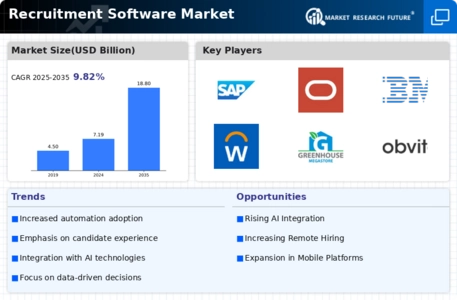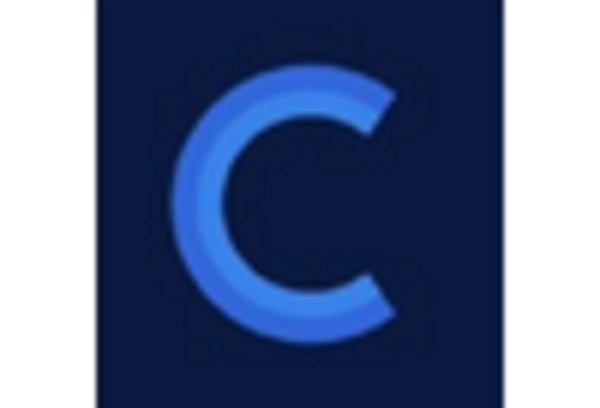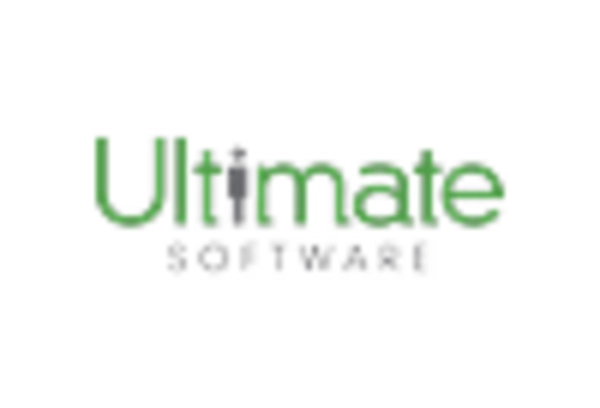Integration of Advanced Analytics
The integration of advanced analytics into the Recruitment Software Market is transforming how organizations approach talent acquisition. By leveraging data analytics, companies can gain insights into candidate behavior, hiring trends, and workforce demographics. This data-driven approach allows for more informed decision-making, potentially leading to improved hiring outcomes. According to recent studies, organizations utilizing analytics in their recruitment processes have reported a 20% increase in hiring efficiency. As the demand for data-driven solutions continues to rise, the Recruitment Software Market is likely to see a surge in products that offer robust analytical capabilities, enabling recruiters to optimize their strategies and enhance overall performance.
Rise of Mobile Recruitment Solutions
The rise of mobile recruitment solutions is a notable trend within the Recruitment Software Market. With the proliferation of smartphones, candidates increasingly prefer to search and apply for jobs via mobile devices. This shift has prompted recruitment software providers to develop mobile-friendly platforms that facilitate easy access to job listings and application processes. Data suggests that mobile-optimized recruitment strategies can lead to a 50% increase in application rates. Consequently, the Recruitment Software Market is adapting to this trend by offering mobile solutions that cater to the evolving preferences of job seekers, ensuring that organizations remain competitive in attracting talent.
Focus on Compliance and Data Security
The focus on compliance and data security is becoming increasingly critical within the Recruitment Software Market. As organizations handle sensitive candidate information, the need for robust security measures and adherence to data protection regulations is paramount. Recruitment software providers are responding by implementing advanced security features and compliance tools to safeguard data. Research shows that companies prioritizing data security can enhance their reputation and build trust with candidates. As regulatory frameworks evolve, the Recruitment Software Market is expected to see a growing emphasis on solutions that not only streamline recruitment processes but also ensure compliance and protect candidate data.
Growing Emphasis on Candidate Experience
The growing emphasis on candidate experience is reshaping the Recruitment Software Market. Organizations are increasingly recognizing that a positive candidate experience can significantly impact their employer brand and talent acquisition success. Features such as user-friendly interfaces, personalized communication, and streamlined application processes are becoming essential components of recruitment software. Research indicates that companies that prioritize candidate experience can reduce time-to-hire by up to 30%. As a result, the Recruitment Software Market is witnessing a shift towards solutions that enhance the overall experience for candidates, thereby attracting top talent and improving retention rates.
Increased Adoption of Cloud-Based Solutions
The increased adoption of cloud-based solutions is significantly influencing the Recruitment Software Market. Organizations are increasingly migrating their recruitment processes to the cloud to benefit from enhanced flexibility, scalability, and cost-effectiveness. Cloud-based recruitment software allows for real-time collaboration among hiring teams and provides access to a centralized database of candidates. Recent statistics indicate that cloud-based solutions can reduce recruitment costs by up to 25%. As businesses continue to seek efficient and adaptable recruitment methods, the Recruitment Software Market is likely to see a continued rise in the demand for cloud-based offerings that streamline hiring processes.


















Leave a Comment